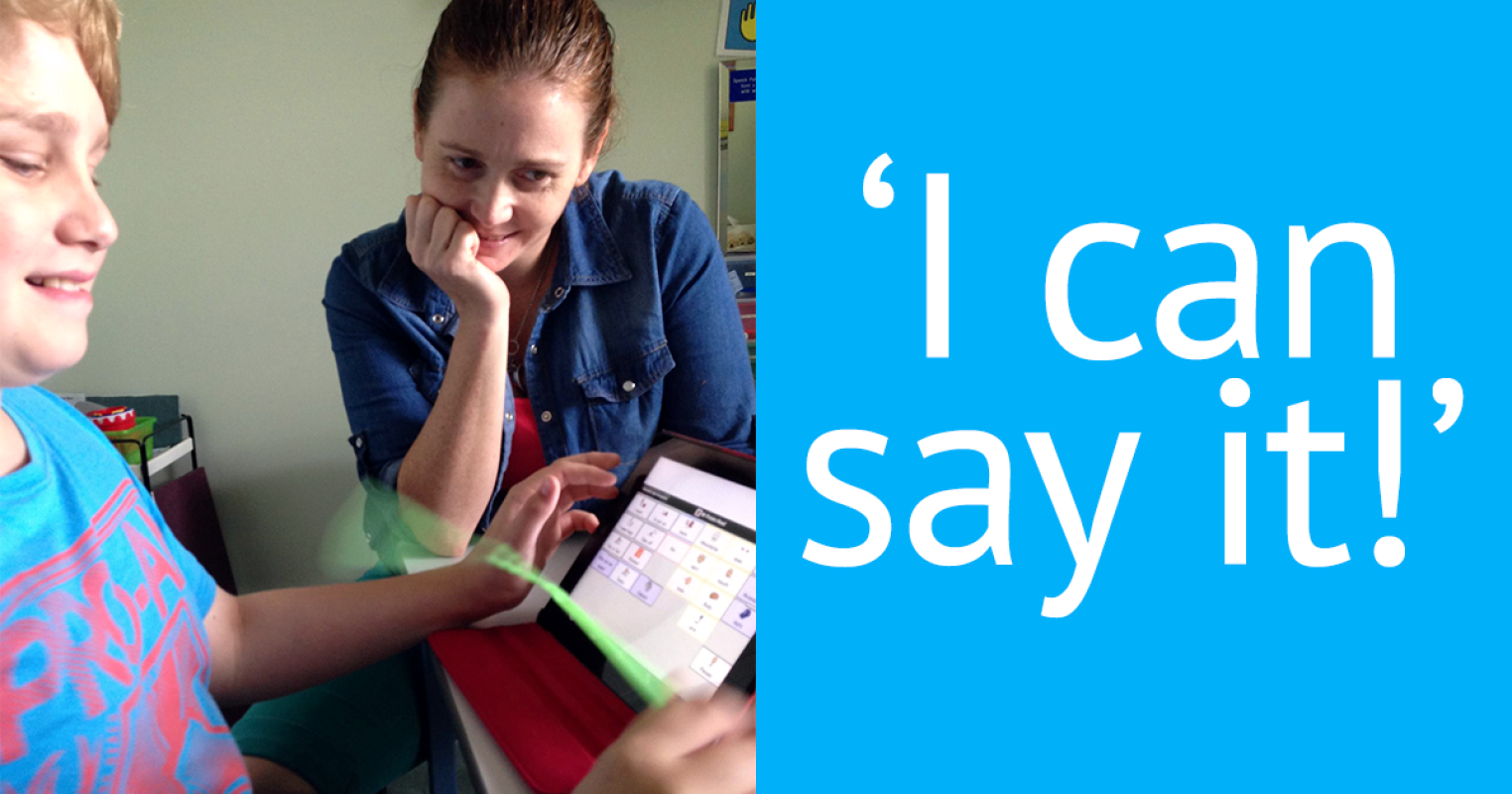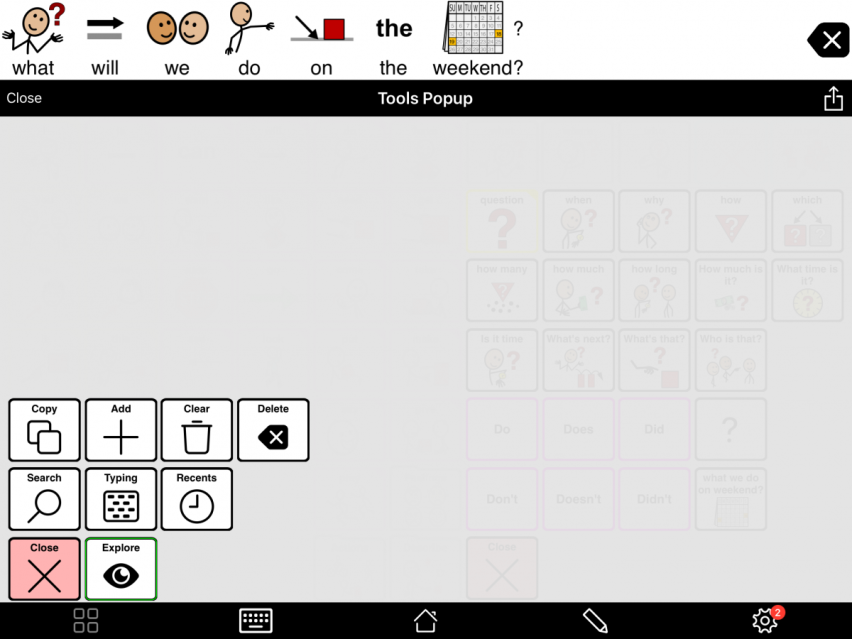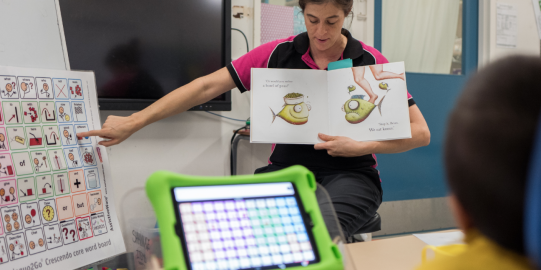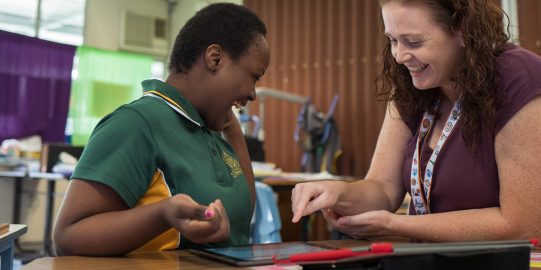But where do we begin to achieve this?
Often we are recommended to start with a beginning communication vocabulary, loaded with sentence starters and pre-programmed phrases and loads of choices. With one button press they can say: “I want…” or “I want to go…” or “I like…” etc. An AAC learner can get fast and instant results from this but unfortunately, they get stuck in a pattern of only being able to say what we have programmed in for them. What if they want to do more than make choices? What if what they really want to say is NOT there? What behaviors might result in this frustration? What AAC learner would want to consistently go back to an AAC system where they cannot say what they want? We limit their opportunities for communication when we give them so few words and no power to combine these words independently.
Instead we should start with the end in mind
If we want an AAC learner to become a successful and independent communicator, we need to give them an AAC system that allows for this. One that gives fast and easy access to powerful core words alongside personalized and fringe vocabulary, as well as a keyboard, is really the best way forward to grow powerful and independent communication for AAC learners.
We talk about core words all the time — and these should be front and center in an AAC system. They should be alongside fringe words (those extra words that give precision and specificity to our message). Core and fringe words can be combined for unique messages.
Speak AAC
AAC learners can learn the power of words by watching how you use and combine them. This modeling is crucial in the learning process. Model on the AAC system as you talk to the AAC learner. Show them how they can combine words and build communication by interacting in everyday situations. Model a wide variety of communication functions so they can learn that words can be combined in different ways for different reasons. We also encourage teaching the words in natural contexts. Through repeated modeling of the words to communicate during real, motivating, everyday activities, AAC users learn the meaning of words and how to use them.
The right way to do pre-programmed sentences
We have talked about core and fringe words, but what about the pre-programmed sentences? Many AAC systems or pages within some vocabularies are built on these scripted sentences (often called “quick fires”). In a robust AAC system, there is a definite place for pre-programmed phrases and sentences. However, we need to look at them differently. Ideally, they should be phrases written by the AAC users. Rather than the people around them guessing what they want to say, an AAC user can write the message and then save it onto a button to use later. This is saves them time and ensures successful communication. It also means they are saying their own words, not someone else’s!
My friend Matthew likes to plan ahead- he always wants to know what is happening next! Using his core word vocabulary in Proloquo2Go he started regularly writing out questions for his parents. It started as “what do?”, then “what do weekend?”, and with some modeling, eventually he was able to make seven button presses to ask “what will we do on the weekend?”. He asks this question a lot. We know he can say it. Does he have to prove himself everyday by re-writing this message? No! Instead, we saved this message onto one button in his questions folder so he can say it quickly and easily. And since then we have added lots of questions to Matthew’s vocabulary so he can ask for all the information he wants!





